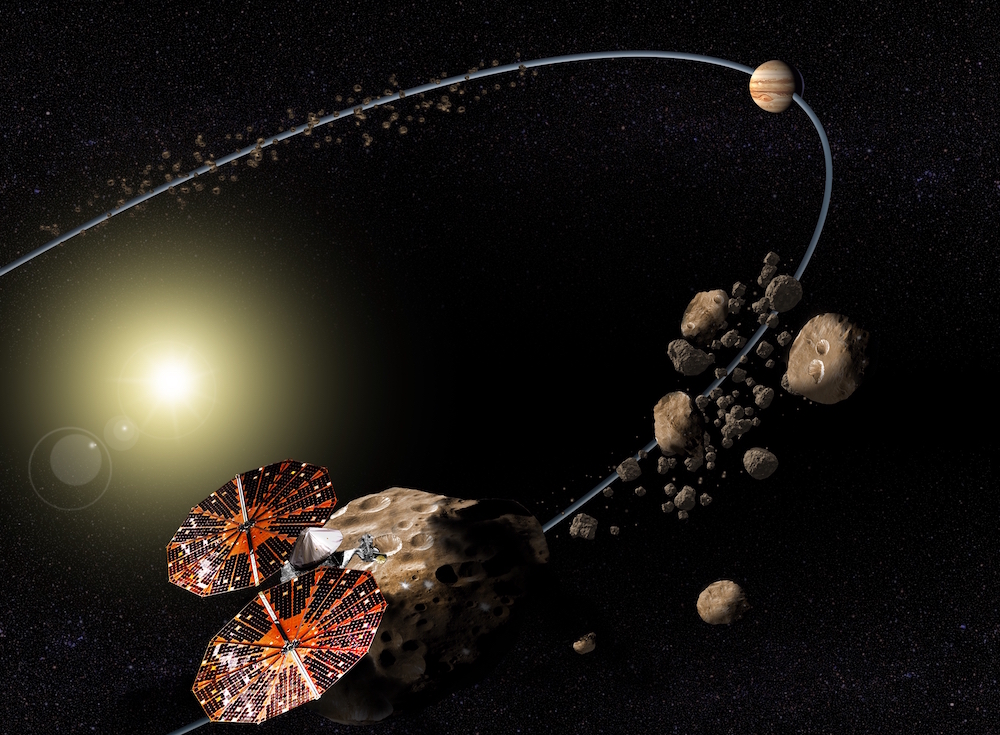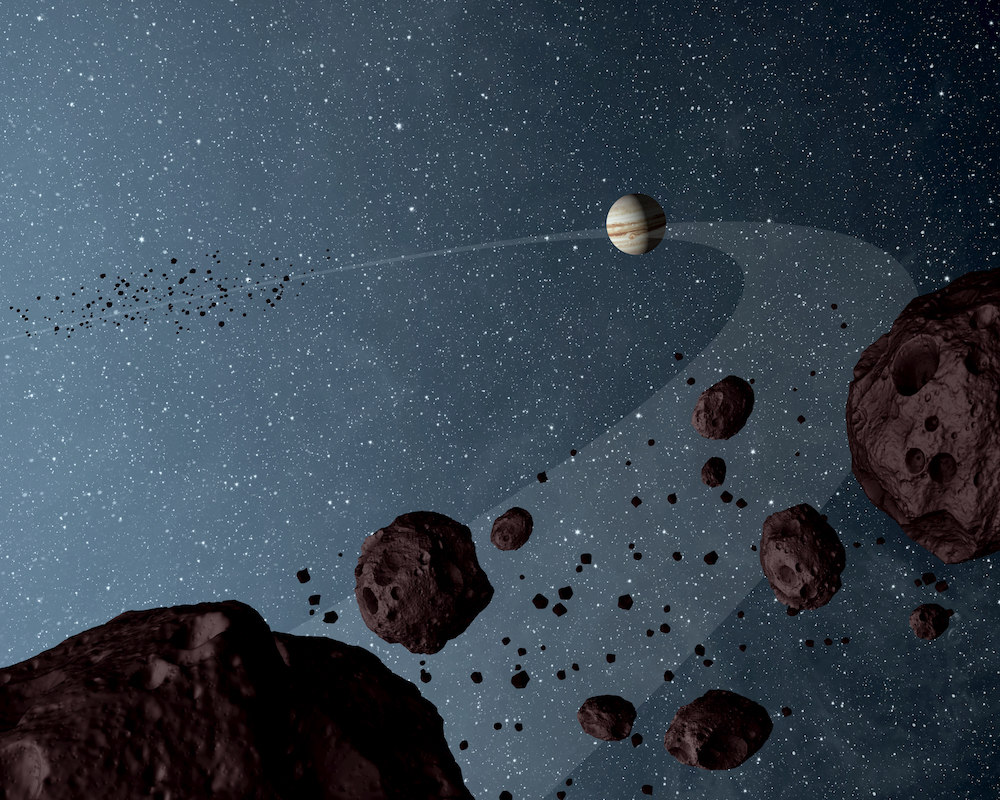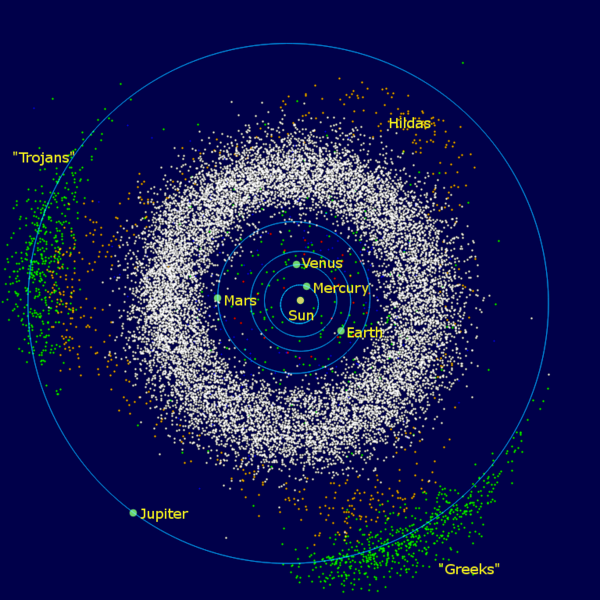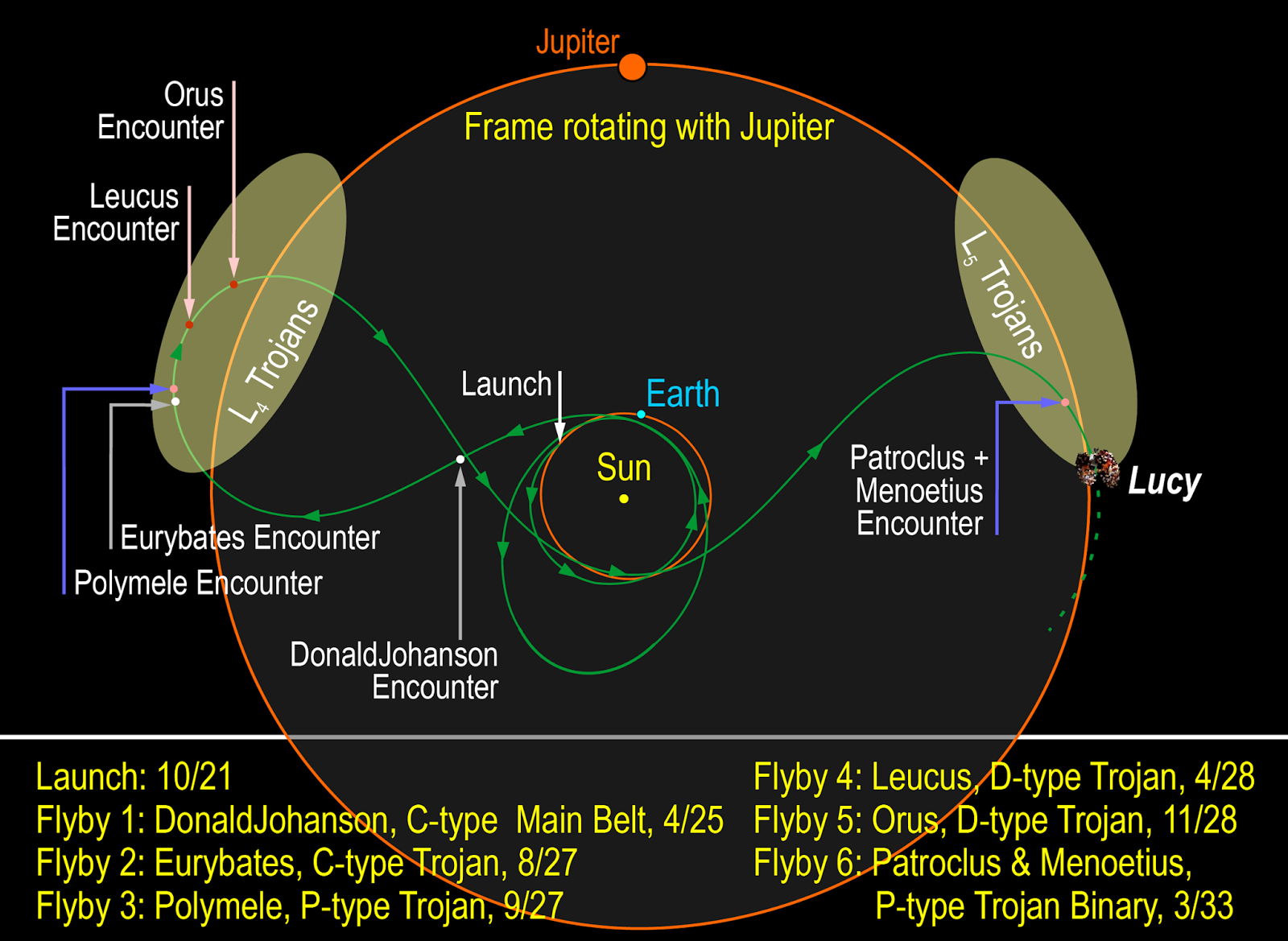
NASA’s proposed mission to a group of primitive and still-unexplored asteroids has been given approval for further development – the Lucy mission will travel to the Trojans, a group of asteroids that share the same orbit as Jupiter. This region has never been visited before, so the mission will give scientists a chance to see some very ancient rocky bodies left over from the formation of the Solar System.
The Lucy mission successfully passed the confirmation review, known as “Key Decision Point C,” which allows the project to continue into the development phase. This approval sets into place the detailed plans, instrument suite, budget and risk factor analysis for the spacecraft. It also paves the way for a planned launch in October 2021.
“Up until now this mission has entirely been on paper,” said Lucy Principal Investigator Hal Levison of the Southwest Research Institute at Boulder, Colorado. “Now we have the go ahead to actually cut metal and start putting this spacecraft together.”
The next upcoming milestone will be the Critical Design Review, which will focus on the system design go the mission. Assuming another successful review, the actual construction of the spacecraft and instruments will begin.


“Today’s confirmation of Lucy is a key step towards better understanding the role that small bodies played in the formation of the Solar System and life on Earth,” said Adriana Ocampo, Lucy’s program executive at NASA Headquarters in Washington, DC. “We congratulate the entire team for their hard work.”
The Lucy mission will be a unique and exciting one since it will be the first ever to visit the Trojans. Lucy was named after the famous fossilized human ancestor called “Lucy” – her skeleton provided unique insight into humanity’s evolution. Likewise, the Lucy mission will help to increase knowledge of planetary origins and the formation of the Solar System. After launch in 2021, it will take 12 years for the spacecraft to reach the Trojans.
The Trojans are a large group of asteroids which share the same orbit of Jupiter; they are clustered in elongated, curved regions at two Lagrange points of Jupiter, both 60 degrees ahead of it i its orbit and 60 degrees behind it. There are estimated to be about 1 million Trojans larger than 1 kilometer in size. They are dark, reddish bodies with featureless spectra. The dark reddish color is thought to come from carbon or organic tholins formed by radiation from the Sun. It is thought that they were captured by Jupiter’s gravity early in the formation of the Solar System.

In 2012, NASA’s WISE spacecraft also showed that the Trojans are uniformly dark, with a hint of burgundy color.
“Seeing asteroids with WISE’s many wavelengths is like the scene in ‘The Wizard of Oz,’ where Dorothy goes from her black-and-white world into the Technicolor land of Oz,” said Amy Mainzer, the principal investigator of the NEOWISE project at NASA’s Jet Propulsion Laboratory in Pasadena, Calif. “Because we can see farther into the infrared portion of the light spectrum, we can see more details of the asteroids’ colors, or, in essence, more shades or hues.”
“We didn’t see any ultra-red asteroids, typical of the main belt and Kuiper belt populations,” said Tommy Grav, a WISE scientist from the Planetary Science Institute in Tucson, Ariz. “Instead, we find a largely uniform population of what we call D-type asteroids, which are dark burgundy in color, with the rest being C- and P-type, which are more grey-bluish in color. More research is needed, but it’s possible we are looking at the some of the oldest material known in the Solar System.”
With the green light now given for further development, NASA’s Lucy mission is a big step closer to becoming reality and in the truest sense will “go where no one has gone before.”
More information about the Lucy mission is available here.
FOLLOW AmericaSpace on Facebook and Twitter!






How exciting for the Expanse Fans…
“Ya U Belters out dar dis will mak rok hoppers of U”
Or maybe we will find the remains of an alien ship!!!
:D:D
Finally I have found the explanation of the Beatles’ beautiful song “Lucy in the sky with diamonds”
These british boys were truly visioners 😀
Unbelievable ways to get into space, that Nasa Is Actually Working On http://www.dailyamericanbuzz.com/2015/05/unbelievable-ways-to-get-into-space.html